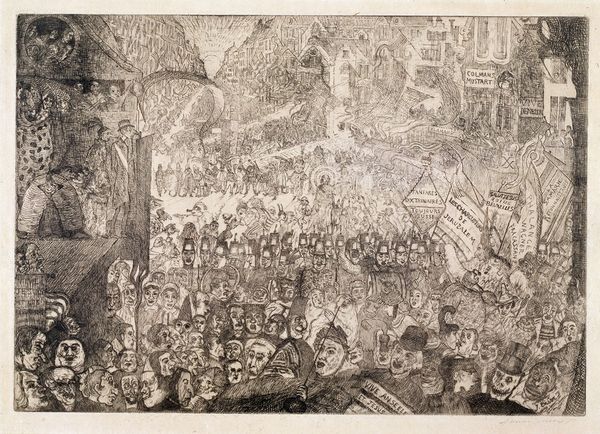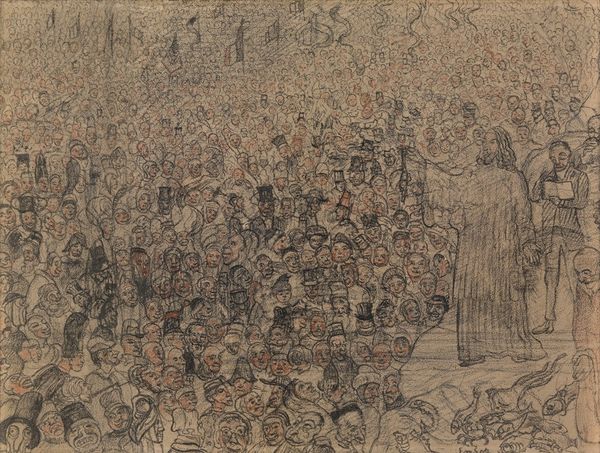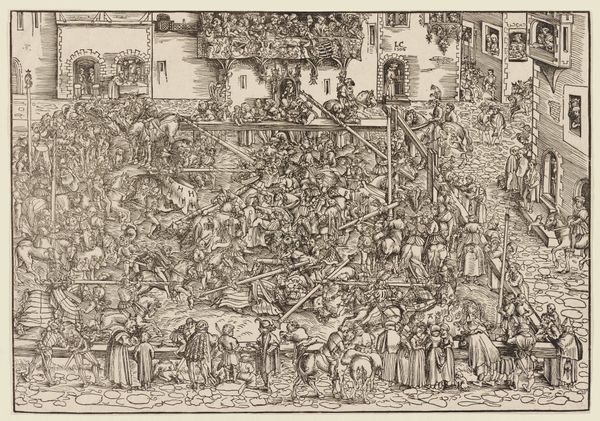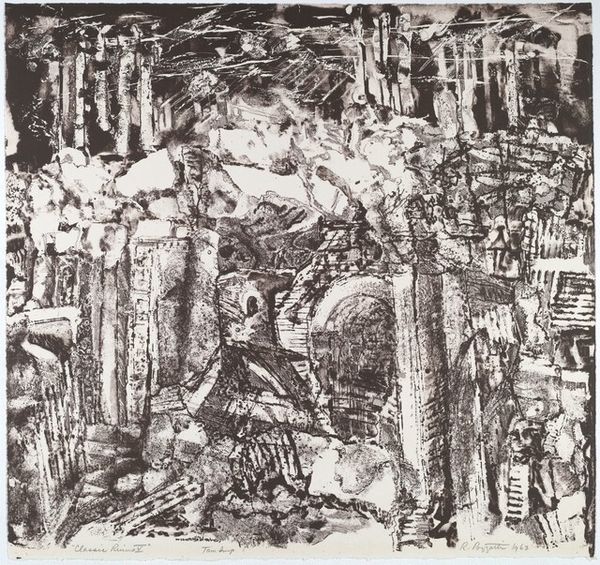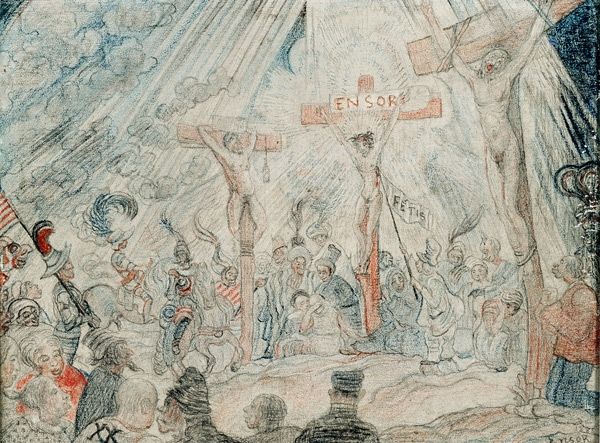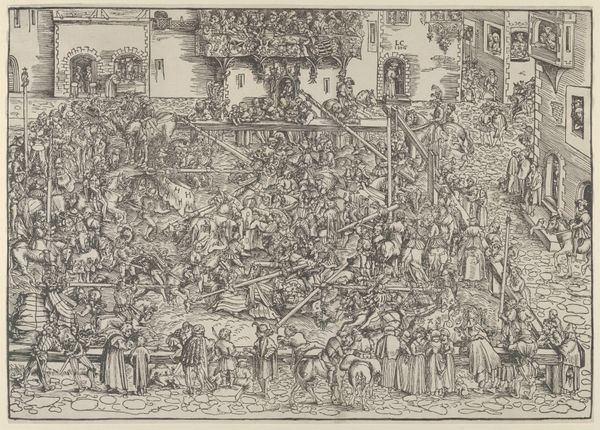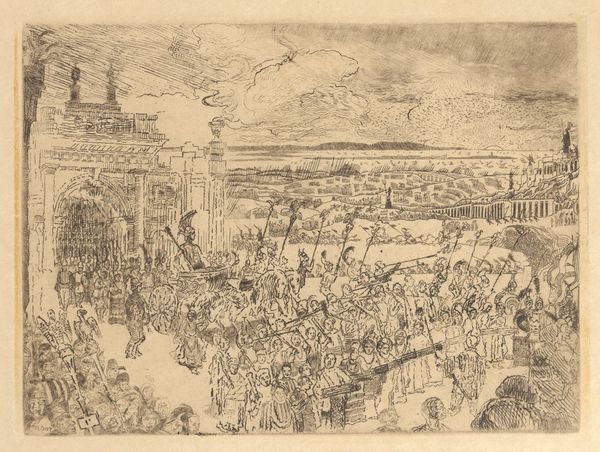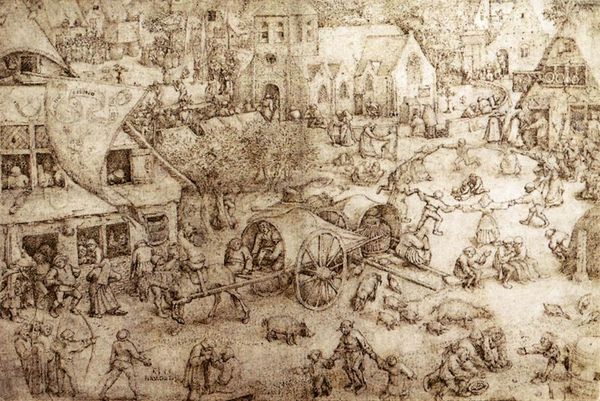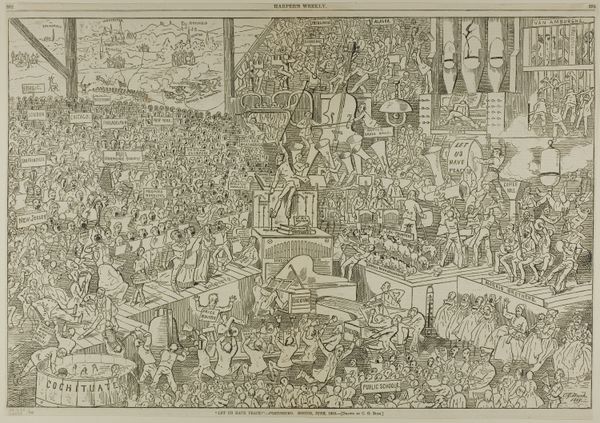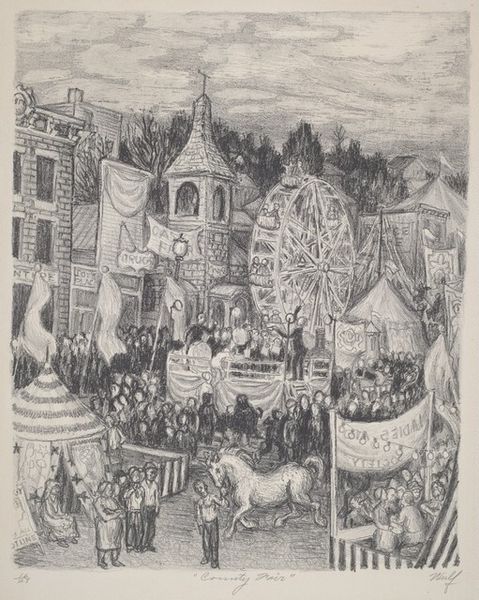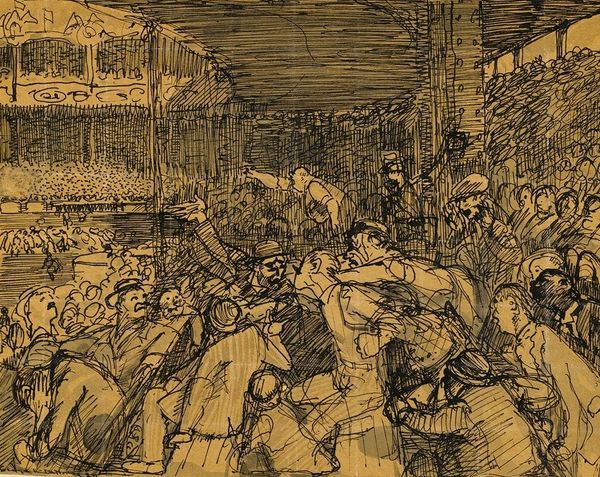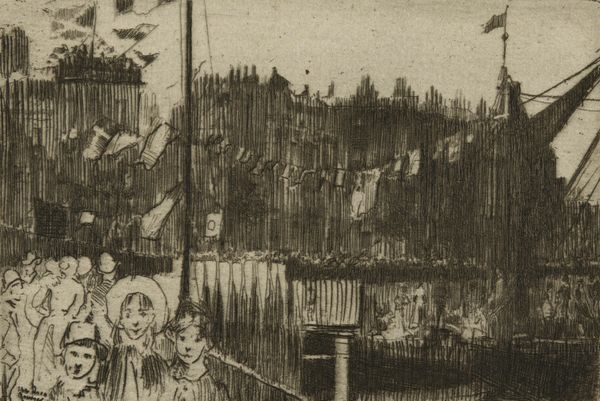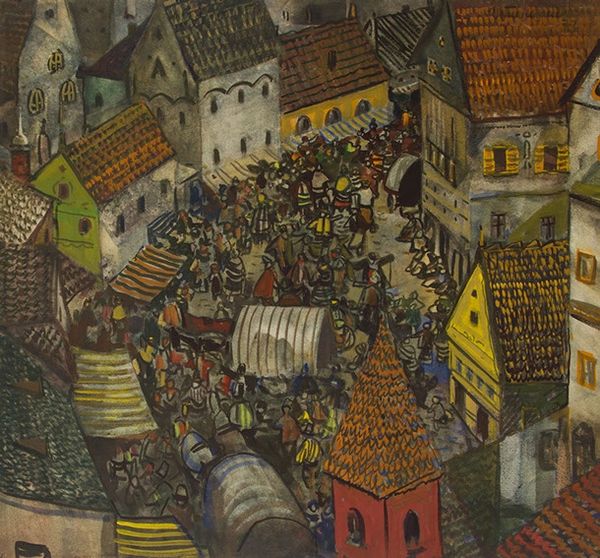
Copyright: Public Domain: Artvee
James Ensor made this print, L’entrée Du Christ À Bruxelles, using etching, a printmaking technique that relies on acid to ‘bite’ into a metal plate. The artist covers a metal plate with a waxy, acid-resistant substance, then draws through it with a sharp needle. When the plate is submerged in acid, the exposed lines are eaten away, creating grooves. Ink is then applied to the plate and the surface wiped clean, leaving ink only in the etched lines, before it is printed onto paper. Here, Ensor’s skilled use of line is evident in the print’s frenetic energy. The medium lent itself to the creation of multiple identical images, aligning with the work's critical view of mass culture and society. The chaotic scene and the artist’s deliberately rough lines, make this a potent, political statement. Considering the labor involved in the etching process, and its capacity for reproduction, we can view Ensor's print not just as a work of art, but as a commentary on the power, politics, and the means of production.
Comments
No comments
Be the first to comment and join the conversation on the ultimate creative platform.
